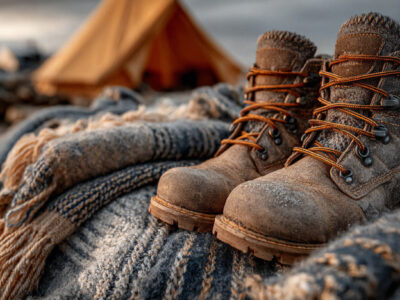Skiing is an exciting and rewarding winter sport, but for beginners, stepping onto the slopes for the first time can be intimidating. Learning the fundamental techniques will not only help you build confidence but also ensure a safer and more enjoyable experience. Whether you are tackling a gentle slope or preparing for more challenging terrain, mastering the basics is key.
This guide will walk you through the essential beginner skiing techniques, from maintaining the right stance to executing controlled turns and safe stops. With patience, practice, and the right approach, you will be gliding down the mountain in no time.
Getting Started: Essential Gear and Preparation
Before hitting the slopes, having the proper gear and preparation is essential. The right equipment ensures better performance, comfort, and safety.
Gear Checklist
- Skis – Beginner skis are typically shorter and have a softer flex for easier control.
- Ski Boots – A snug but comfortable fit provides proper ankle support and stability.
- Poles – While not essential for absolute beginners, poles can help with balance as skills progress.
- Helmet – A crucial piece of safety equipment that protects against head injuries.
- Goggles – Shields your eyes from wind, snow, and glare.
- Layered Clothing – Moisture-wicking base layers, an insulating mid-layer, and a waterproof outer shell help keep you warm and dry.
Understanding Ski Trail Markings
Ski resorts categorize trails by difficulty. Understanding these markings will help you choose the right terrain:
- Green Circle () – Easiest: Wide, gentle slopes, ideal for beginners.
- Blue Square () – Intermediate: Moderate slopes with some steeper sections, best for confident skiers.
- Black Diamond () – Advanced: Steep and challenging terrain, often with obstacles.
- Double Black Diamond () – Expert Only: Extremely difficult terrain with hazards such as cliffs, moguls, or tight trees!
- Orange Oval () – Terrain Parks: Areas featuring jumps, rails, and other freestyle elements.
Basic Skiing Techniques for Beginners
Learning the core techniques of skiing will allow you to develop confidence and control on the slopes.
The Proper Ski Stance
The foundation of skiing begins with a balanced stance. Follow these key principles:
- Keep your feet shoulder-width apart.
- Bend your knees slightly to absorb terrain changes.
- Keep your weight centered over your skis.
- Relax your arms and hold them slightly in front for better balance.
Learning to Move on Skis
Before heading down the slopes, practice moving on flat ground:
- Slide one ski forward at a time in a walking motion.
- Push off gently with one foot while gliding on the other.
- Use your poles for additional balance if necessary.
Stopping Safely: The Snowplow Technique
One of the first skills a new skier should learn is how to stop. The snowplow, or wedge stop, is the most effective method:
- Point the tips of your skis inward, forming a “V” shape.
- Push your heels outward while keeping your knees bent.
- The wider the wedge, the more you will slow down.
Mastering Turns: The Wedge Turn
Turning is crucial for controlling speed and navigating the slopes safely:
- Start in the snowplow stance.
- Shift your weight to the ski opposite the direction you want to turn.
- Keep your upper body facing downhill and allow your skis to follow.
- Practice gentle turns before attempting steeper terrain.
Using a Ski Lift
Riding ski lifts can be intimidating at first, but understanding the process makes it easier:
- When approaching the lift, stand in position with your skis parallel.
- Hold your poles in one hand and prepare to sit as the chair arrives.
- Keep your back against the seat and your skis pointing forward.
- To exit, lean forward slightly and slide off smoothly.
Developing Confidence on the Slopes
Start on Beginner-Friendly Terrain
Green-circle trails are the best place to practice your new skills. These gentle slopes allow you to focus on technique without the added pressure of steep inclines.
Take a Lesson
Enrolling in a ski lesson is highly recommended. Certified instructors provide valuable guidance and can help you develop good habits from the start.
Practice Falling and Getting Up
Falling is inevitable as you learn to ski. Knowing how to get up quickly makes the experience less daunting:
- Roll onto your side and position your skis parallel to the slope.
- Use your hands or poles to push yourself back onto your feet.
Use Your Edges for Control
Learning how to engage your ski edges improves stability and turning precision:
- Apply gentle pressure to the inside edge of your skis when making turns.
- Keeping your weight evenly distributed helps maintain smooth control.
Common Mistakes to Avoid
- Leaning Back – Keeping weight forward over your skis prevents loss of control.
- Rigid Knees – Keep your knees slightly bent to absorb movement and terrain changes.
- Ignoring Trail Signs – Always stay on designated trails that match your skill level.
- Dressing Inappropriately – Layering properly keeps you warm and comfortable throughout the day.
Advanced Beginner Tips
- Pole Planting: Learn to plant your poles in the direction of the turn to aid balance and timing.
- Parallel Turns: As you get better with snowplow turns, start practicing to keep your skis more parallel, reducing the snowplow angle.
- Green Runs: Stick to green (beginner) slopes where you can practice these techniques without the added challenge of steeper terrain.
Safety and Etiquette
- Always be aware of others on the slope.
- Yield to those below you, as they have the right of way.
- If you fall, move to the side of the run quickly so others can pass.
- Always ski in control; speed should match your skill level and the conditions.
Your First Turns Are Just the Beginning
Skiing for the first time can be both exciting and challenging, but by learning and practicing essential techniques, beginners can quickly build confidence on the slopes. Focusing on proper stance, controlled movement, and safe stopping methods will provide a strong foundation for progress. Remember to start on easy terrain, take lessons if possible, and most importantly, enjoy the experience. With dedication and practice, skiing can become a lifelong passion that offers endless adventure.



